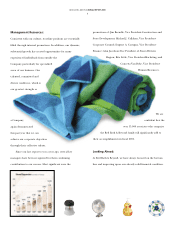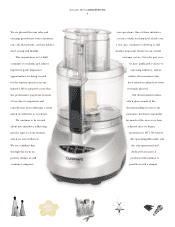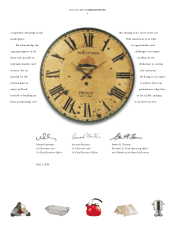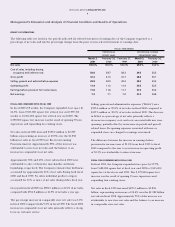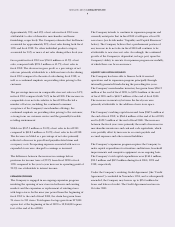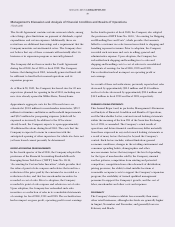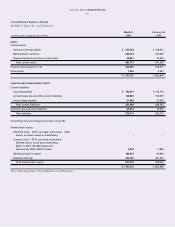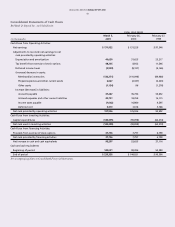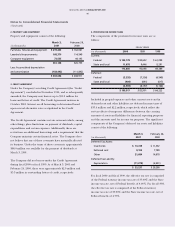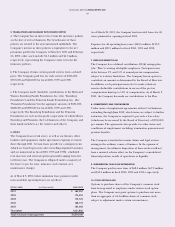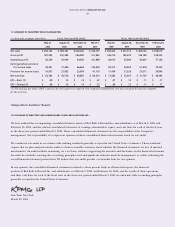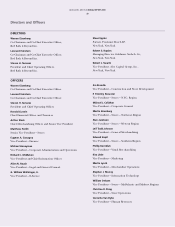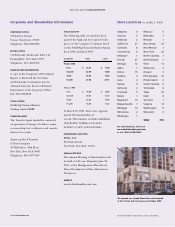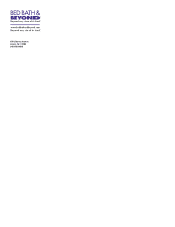Bed, Bath and Beyond 2000 Annual Report Download - page 17
Download and view the complete annual report
Please find page 17 of the 2000 Bed, Bath and Beyond annual report below. You can navigate through the pages in the report by either clicking on the pages listed below, or by using the keyword search tool below to find specific information within the annual report.
BED BATH & BEYOND ANNUAL REPORT 2000
15
I. PROPERTY AND EQUIPMENT
Property and equipment are stated at cost. Depreciation is
computed primarily using the straight-line method over the
estimated useful lives of the assets (five to ten years for furniture,
fixtures and equipment and three to five years for computer
equipment). Leasehold improvements are amortized using the
straight-line method over the lesser of their estimated useful life
or the life of the lease.
The cost of maintenance and repairs is charged to earnings as
incurred; significant renewals and betterments are capitalized.
Maintenance and repairs amounted to $28.4 million, $24.2
million and $17.3 million for fiscal 2000, 1999 and 1998,
respectively.
J. DEFERRED RENT
The Company accounts for scheduled rent increases contained
in its leases on a straight-line basis over the noncancelable lease
term. Deferred rent amounted to $23.3 million and $20.0
million as of March 3, 2001 and February 26, 2000, respectively.
K. SHAREHOLDERS’ EQUITY
In July 2000 and June 1998, the Board of Directors approved
two-for-one splits of the Company’s common stock effected in
the form of 100% stock dividends. The stock dividends were
distributed on August 11, 2000 and July 31, 1998, respectively, to
shareholders of record on July 28, 2000 and July 10, 1998,
respectively.
Unless otherwise stated, all references to common shares
outstanding and net earnings per share are on a post-split basis.
L. REVENUE RECOGNITION
The Company recognizes revenue at the time of sale of
merchandise to its customers. Revenues from the sale of gift
cards, gift certificates and store credits are recognized when
redeemed. A provision for merchandise returns is provided in
the period that the related sales are recorded.
M. PREOPENING EXPENSES
Expenses associated with new or expanded stores are charged to
earnings as incurred.
N. ADVERTISING COSTS
Expenses associated with store advertising are charged to
earnings as incurred.
O. INCOME TAXES
The Company files a consolidated Federal income tax return.
Separate state income tax returns are filed with each state in
which the Company conducts business.
The Company accounts for its income taxes using the asset and
liability method. Deferred tax assets and liabilities are
recognized for the future tax consequences attributable to the
differences between the financial statement carrying amounts of
existing assets and liabilities and their respective tax bases and
operating loss and tax credit carryforwards. Deferred tax assets
and liabilities are measured using enacted tax rates expected to
apply to taxable income in the year in which those temporary
differences are expected to be recovered or settled. The effect
on deferred tax assets and liabilities of a change in tax rates is
recognized in earnings in the period that includes the
enactment date.
P. FAIR VALUE OF FINANCIAL INSTRUMENTS
The Company’s financial instruments include cash and cash
equivalents, accounts payable and accrued expenses and other
current liabilities. The book value of cash and cash equivalents,
accounts payable and accrued expenses and other current
liabilities are representative of their fair values due to the short-
term maturity of these instruments.
Q. IMPAIRMENT OF LONG-LIVED ASSETS
The Company periodically reviews long-lived assets for
impairment by comparing the carrying value of the assets with
their estimated future undiscounted cash flows. If it is
determined that an impairment loss has occurred, the loss would
be recognized during that period. The impairment loss is
calculated as the difference between asset carrying values and
the present value of the estimated net cash flows. The Company
does not believe that any material impairment currently exists
related to its long-lived assets.
R. USE OF ESTIMATES
The preparation of financial statements in conformity with
generally accepted accounting principles requires management
to make estimates and assumptions that affect the reported
amounts of assets and liabilities and disclosure of contingent
assets and liabilities as of the date of the financial statements and
the reported amounts of revenues and expenses during the
reporting period. Actual results could differ from these
estimates.


